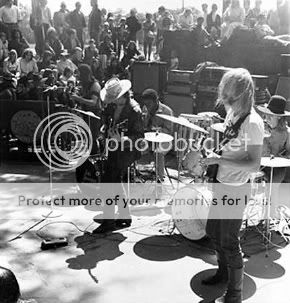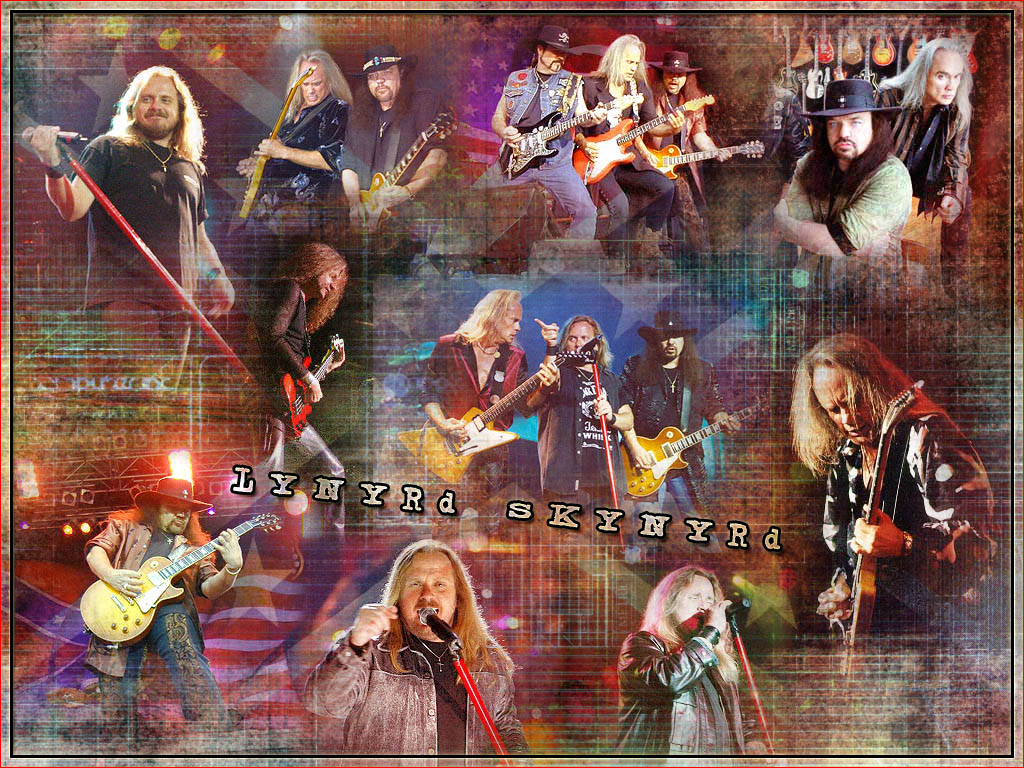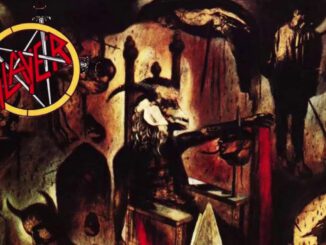 “He knew how to bring out the best in people,” says Gregg Allman of his late brother Duane, legendary guitarist and founder of the band which bears their surname. ”He knew which buttons to push.”
“He knew how to bring out the best in people,” says Gregg Allman of his late brother Duane, legendary guitarist and founder of the band which bears their surname. ”He knew which buttons to push.”
Duane began pushing buttons in the Allman Brothers Band in the late fall of 1968. He had just returned home to Jacksonville, Florida, after a stint as a studio guitarist in Muscle Shoals, Alabama, where he recorded with the likes of Aretha Franklin, Otis Rush, Wilson Pickett, Boz Scaggs and others. Looking to put together a trio, Duane was already committed to drummer Jai Johnny Johnson (Jaimoe, an r&b veteran who had toured with Otis Redding, Percy Sledge and others, and had his eyes set on bassist Berry Oakley, who was playing with guitarist Dickey Betts in Second Coming.
“Duane and Jaimoe kept coming and sitting in with us to get used to playing with Berry,” recalls Betts. “As we kept jamming, something just clicked, and eventually Duane asked if I’d go with them. Butch [Trucks, drummer] was an old friend of Duane’s and he had a big house, so we started rehearsing there. Once he jammed with us, it was something special too, so Duane asked him to join. All of a sudden the trio had five pieces. So the whole band more or less became together as an improve thing. We were all smart enough to say, “This guy’s special’ about one another.” Joined by Second Coming keyboardist Rees Wynans, who would eventually make his mark as a member of Stevie Ray Vaughan’s Double Trouble some 15 years later, the five musicians engaged in extensive jam sessions. They soon discovered a unique voice.
“They very quickly had this great instrumental presence but no real vocalist,” says Phil Walden, then the band’s manager, “Berry was going to do a little singing and so were Dickey and Duane. That was a lot of little singing and no singer. So Duane called Gregg and asked him to come down.”
Gregg was in Los Angeles, where he’d remained after the breakup of the Hourglass, the first band he and Duane had ever recorded with. Hourglass turned into a painful experience for the brothers as their label did its best to shoehorn the band into a trendy psychedelic package. In fact, it sent Duane packing for Muscle Shoals, but Gregg remained in L.A. for another year, where his hard times continued.
“I was miserable out there,” Allman recalls. “They had me playing with studio guys and singing shit like Tammy Wynett’s ‘D-I-V-O-R-C-E.’ So when Duane called I was ready to jump. He said he was tired of being a robot on the staff down in Muscle Shoals, and wanted to take off and do his own thing. He said, ‘I’m ready to get back on the stage, and I got this killer band together: We got two drummers, a great bass player and a hell of a lead guitar player, too.’ And I said, ‘Well, what do you do?’ and he said, ‘Wait’ll you get here and I’ll show you.’ He sent me a ticket, but I knew he didn’t have any money, so I put it in my back pocket, stuck out my thumb on the San Bernardino Freeway, and got a ride all the way to Jacksonville.”
When Gregg arrived, he found a band already hitting its stride, reworking blues classics into hard-charging, original tunes. “I walked into a rehearsal, and they played me the track they had worked up to Muddy Waters’ ‘Trouble No More,’ and it blew me away,” recalls Allman. “It was so intense. I got my brother aside and said, ‘I don’t know if I’m good enough.’ And he starts in on me, ‘Oh, your little punk, I told these people all about you, how you’re the singin’est cat around, and you don’t come in here letting me down.’ Then he played Muddy Waters’ version one time and handed me the works. I said, “Let’s do it.” And with that, they counted off and I did my damnedest. I’d never heard or sung this song before, but by God I did it. I shut my eyes and sang, and at the end of that there was just a ling silence. At that moment we knew what we had.”
Just about a week after Gregg’s arrival, the newly christened Allman Brothers Band played their first gig on March 26, 1969, at the Jacksonville Beach Auditorium. Along with “Trouble No More” and other reformulated blues classics, the set included a host of newly minted Gregg Allman originals. Recalls Allman, “I brought ‘It’s Not My Cross to Bear’ and ‘Dreams’ with me from California and wrote ‘Whipping Post,’ ‘Black-Hearted Woman’ and ‘Every Hungry Woman’ in the first five days I was with these guys. I was on a real roll.”
It was a roll which would help the band find its identity, says Walden: “Aside from a true vocal presence that could stand up to the terrific instrumental sound, Gregg brought these really important foundation songs that the band was really built on.”
Within a month of Gregg’s arrival, the band had relocated to Macon, Georgia, where Walden was starting up hi fledgling Capricorn Records. They played throughout Georgia and North Florida for several months before heading to New York City to record their self-titled debut in August. They were originally slated to work with Cream producer Tom Dowd, but as he was unavailable, they were instead assigned Atlantic house engineer Adrian Barber. The entire seven song album was cut and mixed in weeks; virtually no outtakes exist from the session, a sign that here was a band that knew what they were after.
The Allman Brothers Band was remarkably mature, self-assured debut. Though the band had been together for less than six months the members ranged in age from 21 (Oakley and Gregg Allman) to 25 (Betts), the album sounds like the product of a veteran unit, with a fully formed version. The were perhaps the only band to pull off what every hippie with a guitar and a Muddy Waters album talked about in 1969: reinventing the blues in a manner both true to the original material and, at the same time, visionary. At the center lay Gregg’s song, original compositions which captured all the depth of the finest blues, possessed of fatalism so profound as to border on the gothic. Musically, the band was fired by a devotion to focused jamming and Betts’ and Duane Allman’s revolutionary dual-lead approach.
“We worked stuff out naturally because we were both lead players,” Betts says. “The ideas for playing harmony lines came both from the fiddles of Western swing music, which I had heard a lot of growing up, and the jazz horns of Miles Davis and John Coltrane, which Jaimoe turned us all on to.”
But if the Allman Brothers Band’s self-titled debut heralded the arrival of a new voice, few were listening—the album initially sold less than 35,000 copies, peaking on the charts at No, 188. Still, the band retained its optimism.
“We were just so naïve,” says Betts. “All we knew is that we had the best band that any of us had ever played in and were making the best music we had ever made. That’s what we went on. And everyone in the industry was saying we’d never make it, we’d never do anything out of Macon. They thought Walden should move us to New York or L.A. and acclimate us to the industry, that we had to get the idea of how a rock and roll band was suppose to present itself. Of course, none of us would do that and, thankfully, Walden was smart enough to see that would just ruin what we had. We just stuck with it, and kept touring, getting better, plugging away and making fans wherever we played.”
The band’s persistence would pay off in tow years, with the release of the double-live At Fillmore East, a hit featuring an extended version of “Whipping Post, “from The Allman Brothers Band.
Gear-Vault Classifieds is an eBay alternative. Come sell your music equipment with us, for FREE!




Be the first to comment